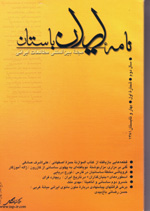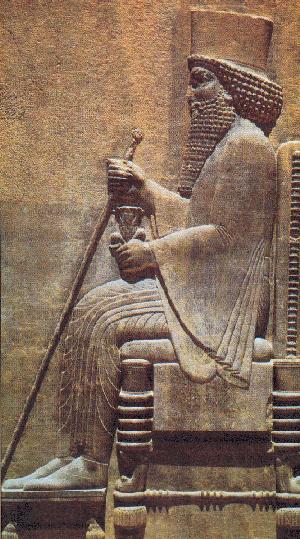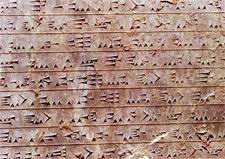|
March 18, 2006
PERSIA IN THE HISTORY
OF CIVILIZATION
To have known Arthur Upham Pope is one of the ennobling experiences of my life; I have not found in any other man so profound a devotion to beauty and truth; he was a very saint among scholars; he, more than all others, revealed Persia [Iran] to me and one of my dearest ambitions is to bring to a larger audience the amazing revelation that he has given the learned world of Persia's inexhaustible art.
Discovery of a cuneiform inscription belonging to the Middle Elamite period in Bandar Abbas was a surprise for archeologists. Tehran, 1 March 2006 (CHN) -- The recent archaeological excavations in Bandar Abbas, the southern port of Iran, led to the discovery of a Middle Elamite cuneiform inscription belonging to 1500 BC for the first time. “Part of an inscription has been discovered in the city of Bandar Abbas in the vicinity of Sarkhoon Village in Hormozgan province, near a cemetery belonging to the Qajar era. Archeologists believe that this cuneiform inscription must have belonged to the Middle Elamite period. This is the first time such an inscription has been found in the city of Bandar Abbas. Considering the long distance between the province of Hormozgan and Khuzestan province, which was the origin of Elamite culture, discovery of this inscription in Bandar Abbas indicates the expansion of Elamite civilization to a great extent. This Elamite inscription is one of the few inscriptions which have been discovered in Hormozgan province and in Sarkhoon plain so far,” said Hossein Tofighian, head of archeological team in Bandar Abbas. According to Tofighian, the expansion of Elamite civilization to the southern parts of the Persian Gulf and Boushehr Port and the traces of this civilization in Hormozgan province had already been approved. However, this is the first time such evidence has been found in Bandar Abbas. The size of this inscription is six in seven centimeters with the thickness of two centimeters, and is carved on a stone. Archeologists believe that this discovered inscription dates back to 1500 BC. “The inscription has suffered serious harm and the other parts of it should be found in order to be more certain about the information given about it. Based on the evidence, the inscription should have been written in Elamite cuneiform. It was carved on a black stone in 9 lines. Some of the words are visible but no phrase can be read easily,” said Shahrokh Razmjou, an archeologist. Bandar Abbas is a port city on the southern coast of Iran in the Persian Gulf. It is the capital of the Hormozgan province. The city occupies a strategic position on the narrow Strait of Hormoz. Thus, Bandar Abbas serves as a major shipping point for most imports, and has a long history of trade with India. Thousands of tourists visit the city and its nearby islands such as Qeshm and Hormoz every year.
Please
Read: Universal Declaration of Human
Rights Adopted and proclaimed by General Assembly resolution 217 A (III) of 10 December
On December 10, 1948 the General Assembly of the United Nations adopted and proclaimed the Universal Declaration of Human Rights the full text of which appears in the following pages. Following this historic act the Assembly called upon all Member countries to publicize the text of the Declaration and "to cause it to be disseminated, displayed, read and expounded principally in schools and other educational institutions, without distinction based on the political status of countries or territories."
|




